Rewards vs. Recognition: Key Differences and Why Both Are Important
.png)
- Quick Comparison: Rewards vs Recognition
- What's the Difference Between Employee Rewards and Recognition?
- Why Employee Rewards Matter
- Why Employee Recognition Matters
- How to Build an Effective Rewards and Recognition Program
- Implementation Framework: 5 Steps to Launch Your Program
- Employee Reward and Recognition Are Both Important


 Cut onboarding time
by 60%—here's the
Ultimate Checklist
that helped do it.
Cut onboarding time
by 60%—here's the
Ultimate Checklist
that helped do it.

Employee rewards and recognition are two distinct but complementary strategies for appreciating employees. Rewards are tangible incentives—bonuses, gift cards, promotions, or paid time off—given in response to specific achievements. Recognition is intangible acknowledgment—public praise, thank-you notes, or awards—focused on appreciating efforts and contributions.
The key difference: Rewards are conditional and transactional (tied to specific goals), while recognition is relational and can happen anytime. Rewards appeal to extrinsic motivation through economic value, while recognition addresses intrinsic needs for validation and belonging.
Both are essential for workplace success. Research shows companies with strong recognition programs experience 31% lower turnover rates and 11.1% higher employee performance. Organizations need both approaches to create a comprehensive employee appreciation strategy that drives engagement, retention, and productivity.
According to The Conference Board's 2023 survey, 62.3% of US employees felt satisfaction with their jobs, the highest number since surveys started in 1987. This reflects HR teams nationwide paying more attention to employee engagement and retention strategies. Yet, Gallup research indicates that 69% of employees would work harder if they felt better appreciated—revealing a significant recognition gap.
Employee satisfaction extends beyond competitive pay or comfortable workspaces. Reward and recognition are two critical factors in a comprehensive appreciation strategy. Here, we'll explore employee reward vs recognition, how they differ, their distinct impacts, and best practices for implementation.
Quick Comparison: Rewards vs Recognition
|
Aspect |
Employee Rewards |
Employee Recognition |
|
Nature |
Tangible, material benefits |
Intangible, emotional acknowledgment |
|
Timing |
Conditional (after achievement) |
Anytime, relational |
|
Examples |
Bonuses, gift cards, promotions, time-off |
Public praise, thank-you notes, awards |
|
Motivation Type |
Extrinsic (external incentives) |
Intrinsic (emotional fulfillment) |
|
Cost |
Economic value required |
Low to no cost |
|
Frequency |
Less frequent, milestone-based |
Daily or ongoing |
|
Who Gives |
Usually managers/leadership |
Anyone (managers, peers, colleagues) |
|
Primary Goal |
Drive specific behaviors/results |
Create belonging and value |
|
Engagement Impact |
14% increase (industry average) |
7x higher when done well |
|
Turnover Reduction |
20% lower voluntary turnover |
31% lower with strong programs |
What's the Difference Between Employee Rewards and Recognition?
HR professionals often interchange employee rewards and staff recognition. While both concepts complement each other in employee rewards and recognition programs, they're fundamentally different and won't work as substitutes for each other in your workplace.
Though employee rewards and recognition are both viable means of appreciating employees, the activities, psychology, and business outcomes differ significantly.
Employee Rewards: Definition and Examples
Rewards refer to tangible benefits you offer employees in response to their performance or achievements. These incentives typically include:
-
Financial bonuses: Performance-based cash rewards, profit-sharing, or commission
-
Gift cards: Flexible rewards through platforms offering 100+ merchant options
-
Paid time off: Extra vacation days, sabbaticals, or flexible scheduling
-
Promotions: Career advancement with increased responsibility
-
Material rewards: Company-branded merchandise, technology, or experiences
-
Professional development: Conference attendance, training programs, or certifications
Generally, you give rewards to acknowledge the achievement of specific goals or objectives. The primary intention is to motivate employees to perform at higher levels. According to Gartner research, well-designed reward programs can drive an 11.1% increase in average employee performance.
Rewards serve as extrinsic motivators to drive desired behaviors and outcomes. They're transactional by nature—employees understand the effort-to-reward equation and can work toward clearly defined targets.
Employee Recognition: Definition and Examples
Employee recognition is a more abstract concept involving acknowledging and appreciating an employee's efforts, contributions, or achievements. Unlike rewards, which feature tangible incentives, the value in employee recognition is the acknowledgment itself.
Common forms of recognition include:
-
Public appreciation: Shout-outs in team meetings or company-wide communications
-
Peer-to-peer kudos: Colleague-to-colleague recognition through digital platforms
-
Written appreciation: Personal thank-you notes or emails from leadership
-
Social recognition: Recognition feeds where coworkers can celebrate each other
-
Awards and certificates: Formal acknowledgment of contributions
-
Symbolic gestures: Applause, standing ovations, or team celebrations
It's important to remember that recognition should come from multiple directions. As an employer or manager, you should celebrate your team's good work. But alongside this, you should also use tools like recognition software to provide a public feed where fellow workmates can show appreciation to each other through peer-to-peer recognition.
Research from SHRM and Workhuman shows 77% of employees value peer recognition opportunities, and 87% report improved workplace relationships when peer recognition is encouraged.
Unlike rewards, recognition focuses on intrinsic motivation by fulfilling the basic human need for validation and a sense of belonging. It's relational rather than transactional—you can give recognition at any time to appreciate the individual, without requiring a specific achievement or milestone.
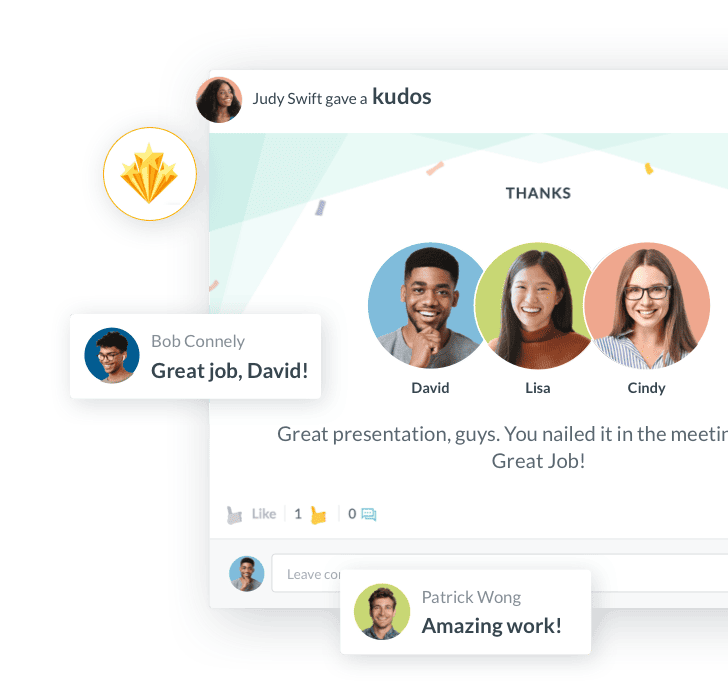
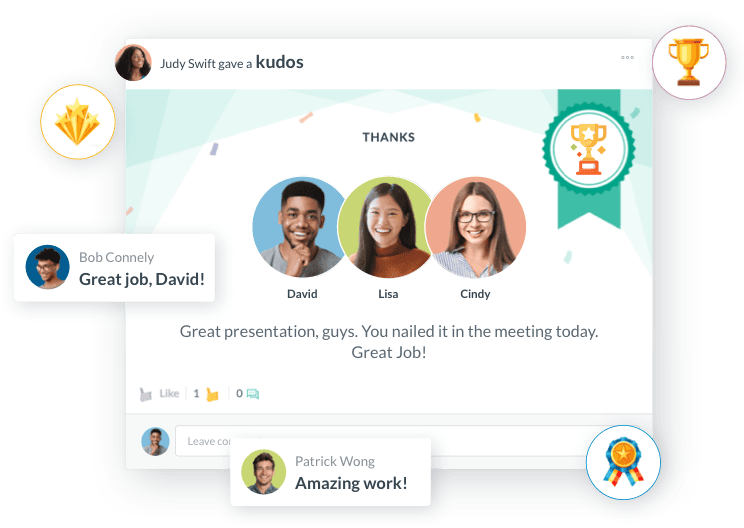
Key Differences at a Glance
Understanding these distinctions helps you apply each strategy appropriately:
1. Tangibility: Rewards feature tangible incentives with economic value, while recognition is primarily abstract and emotionally valuable.
2. Conditionality: Rewards are conditional and transactional (given in response to specific actions or achievements). Recognition is relational (given to appreciate the individual without requiring a specific trigger).
3. Value proposition: Rewards appeal in an economic sense and have physical utility. Recognition appeals emotionally and offers positive psychological impact.
4. Frequency potential: Rewards are typically less frequent due to budget constraints and milestone requirements. Recognition can happen daily without cost constraints.
5. Source flexibility: Rewards usually come from managers or leadership who control budgets. Recognition can come from anyone in the organization—peers, subordinates, or leadership.
Inherently, these concepts sound like two sides of the same coin, and in most cases, one often accompanies the other. However, neither is a substitute for the other. It's essential to provide adequate rewards and recognition to your employees where appropriate, understanding when each approach will have the greatest impact.
Why Employee Rewards Matter
Rewards enhance employee motivation, engagement, and overall job satisfaction. Let's explore the business benefits of employee rewards programs:
Increased Motivation and Performance
Rewards serve as powerful motivators for employees. Giving tangible incentives to your workers when they achieve predetermined objectives signals that you value their results and want them to continue delivering.
Research from Gartner demonstrates that well-designed recognition programs can drive an 11.1% increase in average employee performance. This improvement comes from clear goal-setting combined with meaningful incentives.
Rewards also serve as fair compensation for the effort and time invested in achieving challenging objectives. In the future, the expectation of an incentive encourages your employees to recreate successful results, even if it means going the extra mile.
Improved Productivity and Business Outcomes
Using potential rewards as a motivator often translates to increased performance from employees. Since you set the incentive criteria, you determine what operational goals employees must achieve to receive rewards.
This makes it easier to align employee efforts with company productivity metrics. When you set goals that ladder up to strategic business objectives, reward programs become powerful tools for organizational performance.
Companies with effective rewards programs are 12x more likely to achieve strong business outcomes, according to industry research. When employees feel valued and know you'll acknowledge and reward their hard work, they're more likely to invest discretionary time and energy into their tasks. This results in increased productivity and efficiency across the organization.
Higher Employee Engagement
Nothing embeds staff in work culture like the promise of meaningful rewards for their actions. Employee rewards contribute to higher levels of staff engagement through several mechanisms.
Engaged employees are committed to their work, passionate about their roles, and aligned with organizational goals. Research shows that 90% of employees say recognition motivates them to put in extra effort—and rewards are a critical component of comprehensive recognition strategies.
Even when they hit roadblocks, engaged staff are more motivated to circumvent obstacles to reach their goals quicker. They have a clear picture of the reward and demonstrate higher persistence in overcoming challenges. Organizations with recognition programs report 14% higher productivity and performance compared to those without.
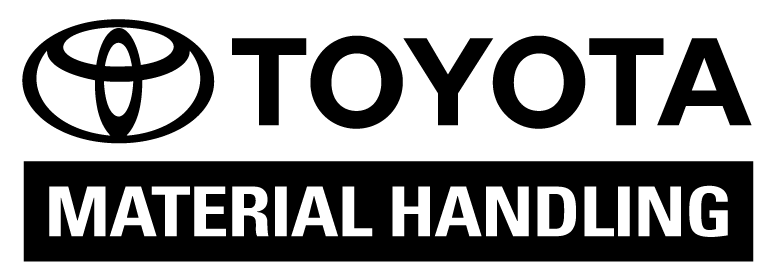 — Daniella Nickerson, Human resources, Toyota
— Daniella Nickerson, Human resources, Toyota 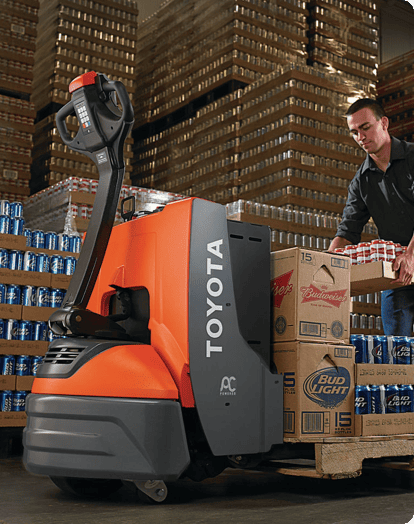
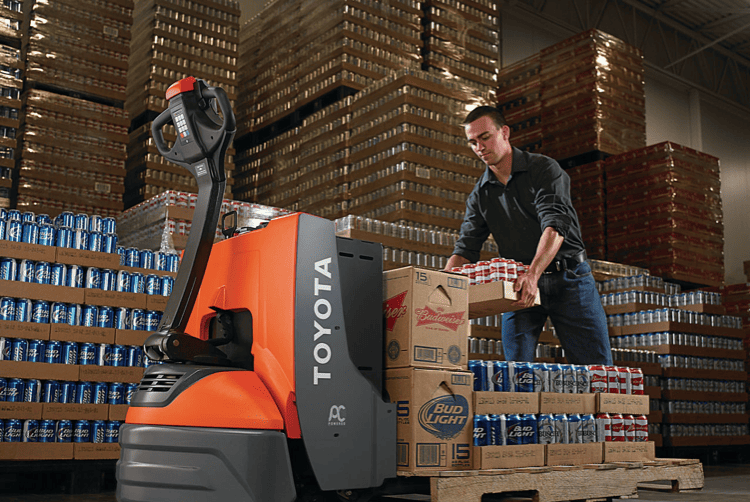
Reduced Turnover Costs
Effective reward programs significantly impact employee retention. Companies with strong reward and recognition programs experience 31% lower voluntary turnover rates, according to SHRM research.
For a 500-employee organization with an average salary of $60,000, reducing turnover by 31% can save approximately $558,000 annually in recruitment, training, and lost productivity costs. These programs more than pay for themselves through retention improvements.
Industry research from Bersin & Associates shows that companies investing at least 1% of payroll in recognition have a 79% higher success rate in achieving their business goals. This makes rewards programs not just a retention tool, but a strategic business investment.
Why Employee Recognition Matters
Recognition addresses deeper human needs and creates lasting cultural impact. Here's why you need employee recognition initiatives as part of your workplace culture:
Employees Feel Valued and Appreciated
While a reward is an extrinsic motivator, recognition appeals to emotions and the intrinsic human desire to be noticed and appreciated. It makes employees feel welcome, wanted, and needed in the organization.
This fosters a sense of belonging and camaraderie, making workers feel like they're contributing significantly to a common cause. When you use recognition software, it has the double effect of recognizing employees' hard work while fostering an environment of appreciation and positivity.
Knowing their input is crucial makes employees self-motivated to do more. Research from Achievers shows that employees who feel recognized are 7 times more likely to be fully engaged in their work.
Strengthens Company Culture and Values
Employee recognition programs directly reinforce organizational culture and values. According to research from Globoforce, 83% of HR leaders say employee recognition can strengthen organizational values.
When you consistently recognize specific behaviors aligned with company values, employees gain clear understanding of organizational expectations. They associate recognized actions with company priorities, making it more likely they'll repeat these behaviors and encourage others to do the same.
Recognition becomes the mechanism through which abstract values become concrete, observable behaviors. Over time, this creates a self-reinforcing culture where employees understand not just what the company says it values, but what it actually rewards and celebrates.
Improves Employee Pride and Performance
Employee recognition and appreciation target the human ego in positive ways, building healthy pride in work. When you give due recognition to staff, you provide validation and respect.
Naturally, employees then take greater pride in their work, growing confident in their workplace contributions. They develop stronger conviction in their actions and decision-making going forward.
Research shows that employees who receive recognition at least monthly are 45% more engaged than those who don't. This pride translates directly into performance—recognized employees are 92% more likely to repeat the behaviors they were recognized for, creating a positive performance cycle.
The need to maintain their positive reputation and protect their ego can also spur employees to go the extra mile in future situations.
How to Build an Effective Rewards and Recognition Program
Employee rewards and recognition programs are powerful tools for motivating and engaging workers. Here's a comprehensive framework to leverage these programs for maximum impact:
Set Clear Objectives and Criteria
Before launching a rewards and recognition program, establish clear objectives and criteria that align with your organization's strategic goals.
Define what you'll recognize:
-
Specific achievements and milestones (sales targets, project completions)
-
Behaviors that reflect company values (collaboration, innovation, customer focus)
-
Contributions to team success and organizational objectives
-
Going above and beyond role requirements
Ensure criteria alignment:
-
Link recognition to company values, goals, and desired outcomes
-
Make criteria measurable and objective where possible
-
Document clear eligibility requirements (full-time, part-time, contractors)
-
Specify frequency limits (can same employee receive multiple rewards?)
Clear guidelines create a fair and transparent program that employees can understand and work toward. When criteria tie directly to business objectives, recognition becomes a strategic tool for organizational performance rather than random appreciation.
Choose the Right Recognition Platform
Modern employee recognition software transforms recognition from sporadic manager-led initiatives into systematic, company-wide programs. The right platform makes appreciation easy, trackable, and aligned with business goals.
Key features to evaluate:
Peer-to-Peer Recognition: Research shows 77% of employees value opportunities to recognize colleagues. Platforms like Workmates enable employees to give kudos to teammates instantly, creating a culture where appreciation flows in all directions—not just top-down.
Points-Based Rewards System: Look for platforms that allow employees to accumulate points through recognition, then redeem them for rewards of their choice. Workmates offers 100+ gift card options plus custom reward creation, giving employees flexibility to choose meaningful incentives.
Mobile Accessibility: For frontline workers, warehouse staff, healthcare teams, and remote employees, mobile access is critical. Recognition shouldn't require employees to be at a desk—it should happen in the moment, wherever work occurs.
Integration Capabilities: Your recognition platform should integrate seamlessly with existing systems. Workmates integrates with major HRIS platforms including ADP, Workday, and UKG, plus communication tools like Slack and Microsoft Teams. This ensures recognition happens within employees' daily workflows rather than requiring separate logins.
Analytics Dashboard: Platform analytics reveal patterns that inform strategic decisions. Look for dashboards tracking:
-
Recognition frequency by department and individual
-
Values alignment through badge distribution analysis
-
Participation equity across teams and demographics
-
Correlation between recognition and retention/performance metrics
-
ROI measurement for program effectiveness
Workmates provides comprehensive analytics that help HR leaders identify recognition gaps, celebrate culture champions, and demonstrate program value to executives.
Practice Timely and Specific Recognition
Recognition loses its impact when it's delayed or generalized. The most effective recognition happens immediately and specifically acknowledges what was done well.
Timing matters: Provide recognition as soon as possible after the achievement or observation. Research shows that timely recognition reinforces the connection between action and appreciation, making it more likely employees will repeat the behavior.
Specificity creates meaning: Don't just say "Good job." Instead, be specific about what impressed you:
Generic: "Good job on the project."
Specific: "Excellent work completing the project ahead of schedule. Your attention to detail in the final presentation, proactive communication with stakeholders, and remarkable use of the virtual telephone system were instrumental in its success."
Specific recognition demonstrates genuine observation and appreciation. It shows you noticed the details and understand the effort involved. This level of specificity makes recognition meaningful and memorable.
Enable Peer-to-Peer Recognition
While manager recognition is important, peer recognition often carries unique weight. Colleagues see daily efforts that managers might miss, and peer appreciation creates stronger team bonds.
Why peer recognition matters:
-
77% of employees value peer recognition opportunities
-
87% report improved workplace relationships when peer recognition is encouraged
-
Peer recognition creates horizontal accountability and team cohesion
-
It reduces recognition bottlenecks when only managers can give appreciation
Implementation strategies:
Social Recognition Feeds: Platforms like Workmates provide a social feed where employees can publicly celebrate each other's accomplishments. Colleagues can leave comments and words of encouragement, creating a sense of community and appreciation within the organization.
Structured Recognition Events: Hold bi-annual or quarterly recognition meetings where peer-nominated employees receive awards. This gives employees dedicated opportunities to shout out teammates while leadership publicly validates peer nominations.
Daily Recognition Prompts: For recurring department meetings, dedicate 5 minutes on the agenda to team shoutouts. Team members begin to count on this time as an opportunity to recognize peers, making appreciation a predictable part of team rhythm.
Measure and Optimize Your Program
Recognition programs should be measured, analyzed, and continuously improved based on data. Companies that regularly review program effectiveness see significantly better results.
Key metrics to track:
Recognition Frequency: Monitor how often employees give and receive recognition. Research indicates employees should receive recognition at least monthly for optimal engagement. Track frequency by department, role, and demographic to identify gaps.
Participation Rates: Calculate what percentage of employees actively use the recognition platform both as givers and receivers. Target 60%+ active participation. Low participation indicates either cultural resistance, platform usability issues, or insufficient manager buy-in.
Values Alignment: Analyze which company values are most frequently recognized through badge distribution. If innovation is a core value but rarely recognized, it signals a gap between stated and lived values.
Retention Correlation: Compare turnover rates between highly-recognized employees and those receiving little recognition. Companies tracking this metric consistently see 20-31% lower turnover among recognized employees.
Business Outcome Correlation: Link recognition data to performance metrics, customer satisfaction scores, safety incidents, or productivity measures. This demonstrates program ROI and justifies continued investment.
Budget Utilization: For rewards programs, track redemption rates, reward preferences, and cost per recognition. Optimize your rewards catalog based on what employees actually value and redeem.
Practice Inclusive and Fair Distribution
Ensure that rewards and recognition are distributed fairly and inclusively across the organization. Recognition equity is critical for program credibility and effectiveness.
Inclusive recognition principles:
-
Recognize achievements at all levels, from frontline employees to managers and executives
-
Avoid bias in who receives recognition—track demographics to ensure equity
-
Make programs accessible to all employees including remote workers, part-time staff, contractors, and frontline workers
-
Celebrate diverse contribution types, not just revenue-generating roles
-
Recognize both individual achievements and team successes
Only 32% of employees strongly agree they receive fair recognition, according to recent research. Organizations that monitor and address recognition equity see significantly higher program effectiveness and employee trust.
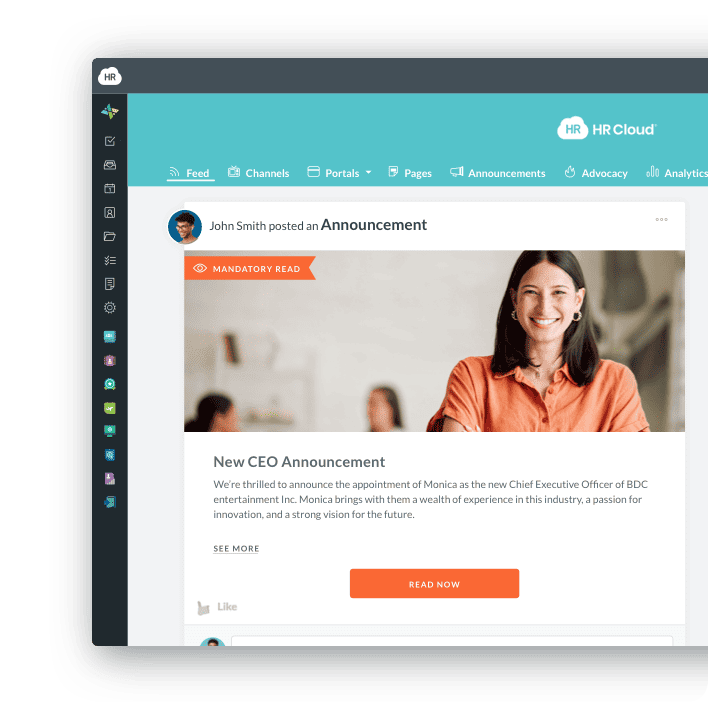
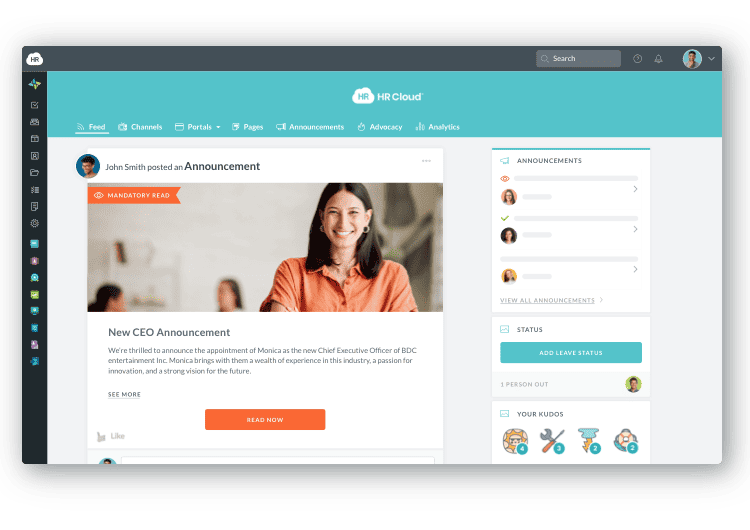
Celebrate Milestones and Achievements
Apart from day-to-day recognition, celebrate significant milestones and achievements in memorable ways that signal their importance.
Milestone categories:
-
Tenure celebrations: Work anniversaries (especially 1, 5, 10+ years)
-
Project completions: Major initiatives, product launches, successful implementations
-
Performance milestones: Sales goals, customer satisfaction targets, quality achievements
-
Personal milestones: Professional certifications, degrees, industry recognition
-
Team victories: Department goals, safety records, collaboration successes
Celebration strategies:
-
Organize special events, ceremonies, or team-building activities for major accomplishments
-
Create different recognition tiers based on achievement magnitude
-
Involve leadership in celebrating the most significant milestones
-
Document and share milestone celebrations to inspire others
-
Connect milestones to organizational success and values
Employee appreciation events create a sense of pride, foster camaraderie, and encourage a culture of excellence. They signal that achievements don't go unnoticed and that sustained contributions are valued long-term.
Implementation Framework: 5 Steps to Launch Your Program
1. Define Recognition Criteria (Week 1)
-
Align with company values and strategic objectives
-
Document specific behaviors and milestones worthy of recognition
-
Ensure criteria are measurable and objective
-
Budget recommendation: Allocate 1% of total payroll (industry standard)
2. Select Recognition Technology (Week 2-3)
-
Choose platform supporting peer-to-peer recognition (77% employee preference)
-
Ensure mobile accessibility for frontline and remote workers
-
Verify integration with existing HRIS systems (ADP, Workday, UKG)
-
Evaluate analytics dashboards to track program ROI
3. Launch Pilot Program (Month 1)
-
Start with one department or team to test and refine
-
Train managers on timely, specific recognition techniques
-
Enable peer-to-peer recognition features
-
Set initial points/rewards budget and catalog
4. Monitor Key Metrics (Months 2-3)
-
Recognition frequency (target: weekly minimum per employee)
-
Participation rates (goal: 60%+ active users)
-
Values alignment (badge distribution analysis)
-
Early retention indicators and engagement pulse surveys
5. Scale and Optimize (Month 4+)
-
Expand to all departments based on pilot learnings
-
Adjust rewards catalog based on redemption data and employee feedback
-
Celebrate program champions publicly
-
Measure against business outcomes (productivity, turnover, engagement scores)
-
Share success stories and ROI with leadership
Employee Reward and Recognition Are Both Important
Employee rewards and recognition both matter critically for organizational success. They increase motivation and improve productivity, translating to better job satisfaction, employee engagement, and employee retention.
The strategic difference:
-
Employee rewards are more physical, often taking the form of tangible benefits with economic value. They drive extrinsic motivation through clear goal-achievement cycles.
-
Employee recognition is abstract, appealing to employee emotions and psychology. It fulfills intrinsic needs for validation, belonging, and appreciation.
Research consistently demonstrates that combined programs deliver superior results:
-
31% lower voluntary turnover (SHRM)
-
11.1% higher employee performance (Gartner)
-
12x better likelihood of strong business outcomes (Industry research)
-
90% of employees motivated to put in extra effort (Achievers)
By implementing both employee recognition and reward programs through platforms like Workmates, you'll create a supportive and rewarding work environment for your staff. Modern recognition technology makes it easier than ever to provide frequent, meaningful appreciation while tracking ROI and demonstrating strategic value.
Ready to transform your recognition program? See how Workmates helps organizations reduce turnover, boost engagement, and create cultures where employees feel genuinely valued. Book a demo to explore how unified recognition and rewards can drive results in your organization.
Frequently Asked Questions
What's the difference between employee rewards and recognition?
Rewards are tangible, often monetary or physical incentives (e.g., bonuses, gift cards, time-off) tied to specific achievements. Recognition is intangible, such as public praise or thank-you notes, aimed at emotionally acknowledging contributions. Rewards appeal to extrinsic motivation while recognition addresses intrinsic needs for validation and belonging.
Why are both rewards and recognition important?
Combined, they boost motivation, productivity, engagement, retention, and job satisfaction. Research shows companies with strong recognition programs see 31% lower voluntary turnover rates and 11.1% higher employee performance. Rewards handle extrinsic incentives, while recognition addresses emotional needs—both are essential for comprehensive employee appreciation.
What types of rewards are most effective?
Options that offer personalization and choice—like points-based systems redeemable for gift cards, experiences, or time-off—tend to drive stronger engagement and impact. Industry research shows 62% of employees prefer tangible rewards, with cash and gift cards being most popular. Platforms offering 100+ reward options allow employees to choose what's meaningful to them.
How should recognition be delivered to be meaningful?
Recognition must be timely, specific, and linked to the behavior or outcome. According to research, employees who receive recognition at least monthly are 45% more engaged. Public shout-outs, written acknowledgments, and peer-to-peer praise through recognition platforms are all effective methods. Specificity matters—instead of "good job," say "excellent work completing the project ahead of schedule; your attention to detail was instrumental."
How do you determine employees' recognition preferences?
Use surveys and questionnaires asking about frequency preferences, public vs private recognition, types of recognition, and reward preferences. Sample questions include "What kind of recognition means the most to you?" and "How often would you like to receive recognition?" Many modern recognition platforms include built-in survey tools to gather this feedback systematically.
How often should recognition occur?
Frequent, ongoing recognition (monthly or more) is key. Research shows 43% of employees prefer being recognized at least once a week. Regular, low-cost gestures can be more effective than rare large rewards. Recognition should be built into daily workflows through platforms that make appreciation easy and instant, rather than saved for annual reviews or special occasions.
How much should companies budget for recognition programs?
Industry research from SHRM and Bersin & Associates recommends allocating at least 1% of total payroll to recognition programs. Companies spending 1% or more report 79% higher success rates in achieving business goals. For a company with $10 million in payroll, this means a $100,000 annual recognition budget. Recognition platforms with points-based systems help manage and track these budgets effectively.
How do you build recognition into company culture?
Encourage everyday acknowledgment from managers and peers through accessible technology platforms. Integrate recognition into performance management practices and daily workflows. Use platforms that allow social or peer-to-peer recognition so appreciation flows in all directions. Train managers to give timely, specific recognition regularly. Celebrate program champions who model recognition behaviors. Connect recognition to company values to reinforce desired culture.
What's the ROI of employee recognition programs?
Recognition programs deliver measurable ROI through multiple channels: 31% lower voluntary turnover rates (SHRM), 11.1% increase in employee performance (Gartner), 14% higher productivity (industry average), and 12x better likelihood of strong business outcomes. For a 500-employee organization, this can translate to savings of $500,000+ annually in reduced recruitment and training costs alone, not counting productivity and performance improvements.
How do you start a rewards & recognition program?
Step 1: Define clear objectives and criteria aligned with company values and goals. Step 2: Choose the recognition method (platform-based systems offer best scalability and tracking). Step 3: Enable peer-driven recognition alongside manager-led appreciation. Step 4: Launch a pilot program with one department to test and refine. Step 5: Set up monitoring and feedback mechanisms, iterating based on analytics and survey insights. Step 6: Scale across organization while continuously measuring effectiveness against business outcomes.

Keep Reading
15 Proven Ways to Create a Healthy Work Environment (2026 Guide)
A healthy work environment is a workplace where employees experience psychological
Company Culture Software: How to Build a Thriving Workplace in 2026
Ask any business leader what drives lasting organizational success, and you'll hear
7 Types of Employee Recognition Every HR Leader Needs in 2026 (With Implementation Guide)
Employee recognition isn't just about handing out plaques at year-end celebrations
Like What You Hear?
We'd love to chat with you more about how HR Cloud® can support your business's HR needs. Book Your Free Demo

Build a Culture of Recognition. Boost Engagement. Guaranteed.
Workmates empowers employees to stay informed, connected, and appreciated—whether they’re on the front line, in the office, or remote. Recognition drives 12x higher engagement.Trusted by industry leaders in every sector




Cut Onboarding Costs by 60%.
Take the confusion and follow-ups out of onboarding with automated workflows, digital forms, and structured portals—so new hires ramp faster 3X quicker.Trusted by industry leaders in every sector




